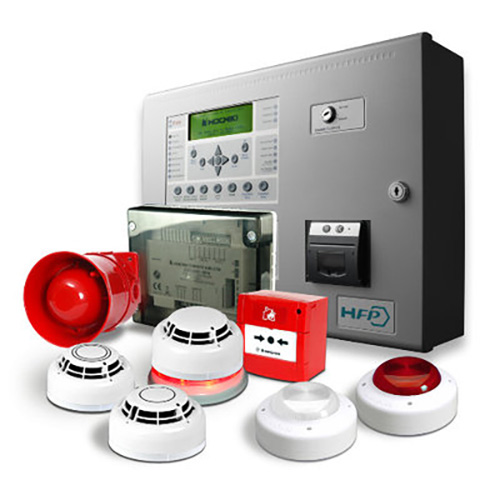Effective and safe solutions
Fire protection systems such as sprinklers are an essential part of any building’s safety infrastructure. But they are just one of many systems that must work together to keep a building safe and efficient. Integrating fire protection systems with other systems such as ventilation, lighting, and electrical systems can provide many benefits.
- Safety system synchronization Integration of fire protection systems with other security systems, such as alarm systems, CCTV or access control, allows for coordination of actions in the event of a threat. For example, in the event of a fire, the fire protection system can automatically notify the alarm system, which in turn can trigger evacuation procedures and notify the appropriate services.
- Interaction with ventilation systems Integration of the fire protection system with the ventilation system is crucial for effective fire protection. If a fire is detected, the ventilation system can be automatically switched off to prevent the spread of smoke and fire. On the other hand, if necessary, the ventilation system can help to remove smoke from the building.
- Connectivity with lighting systems Fire protection systems can also be integrated with lighting systems, especially emergency lighting. In the event of a fire, the lighting system can automatically switch to emergency mode, ensuring adequate lighting of escape routes.
- Integrated Building Management System (BMS) Integrated Building Management System (BMS) is a system that allows control and monitoring of all systems and installations in a building, including fire protection systems. With BMS, operators can quickly identify and respond to any problems, including fire situations.
- Energy Efficiency Integrating fire protection systems with other systems can also help to improve a building’s energy efficiency. For example, a fire protection system can be integrated with an energy management system to minimize energy consumption during normal operation while providing adequate power in emergency situations.
- Integration with HVAC systems Heating, ventilation, and air conditioning (HVAC) systems can be coordinated with fire protection systems to prevent the spread of fire. For example, in the event of a fire, the HVAC system can be automatically shut down to prevent further spread of fire and smoke through the ventilation ducts.

Summary
Integrating fire protection systems with other building installations is key to creating a safe and efficient infrastructure. This enables coordination of the activities of different systems, ensuring a quick response to fire hazards, and improving the energy efficiency of buildings. This type of integrated approach to building management is the future of the construction sector, bringing benefits to both owners and users of buildings. Knowledge of the possibilities of integrating fire protection systems with other installations is an important part of building planning and management, which translates into real benefits in terms of safety and efficiency.
